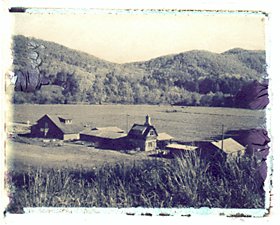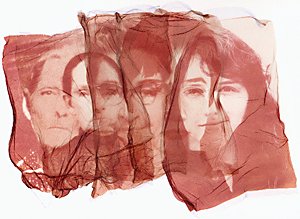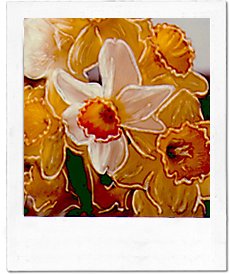 |
|
|
||||
 Polaroid/Fuji Image Transfers
Polaroid/Fuji Image TransfersUsing peel-apart film, Polaroid 669 or Fuji FP-100C, an image is exposed onto the film by means of a Daylab or Vivitar slide printer, camera or enlarger. The film is pulled apart prematurely and the dye-laden "negative" is rolled onto an absorbent surface, such as watercolor paper. The dyes soak into the receptor surface and the image is "transferred". The image may then be hand-colored if desired. Each image is unique due to the physical properties of the transfer process. |
||||
|
||||
|
|
||||
 Polaroid/Fuji Emulsion Transfers
Polaroid/Fuji Emulsion TransfersDifferent from the image transfer but the same film and equipment, the image is developed fully. The print is then soaked in hot water until the emulsion can be removed and placed onto virtually any surface, including three-dimensional surfaces. The emulsion can be sculpted, stretched and torn into different shapes, then hand-colored if desired. The creative possibilities are limitless and each image is unique. |
||||
|
|
||||
 Polaroid SX-70 Manipulation
Polaroid SX-70 ManipulationUsing Polaroid SX-70 film, SX-70 cameras or 600 series cameras, one can transform images so that the distinction between photograph and painting is blurred. After the image develops, the film chemistry remains soft and pliable so that it can be manipulated by using different blunt tools. A variety of effects can be achieved and each image is unique. Unfortunately, Polaroid no longer manufacturers this type of film. |
||||
 |
 |
 |
|
Polaroid® is a trademark of the Polaroid Corp. All images ©2002 Mary Jo Brezny. |